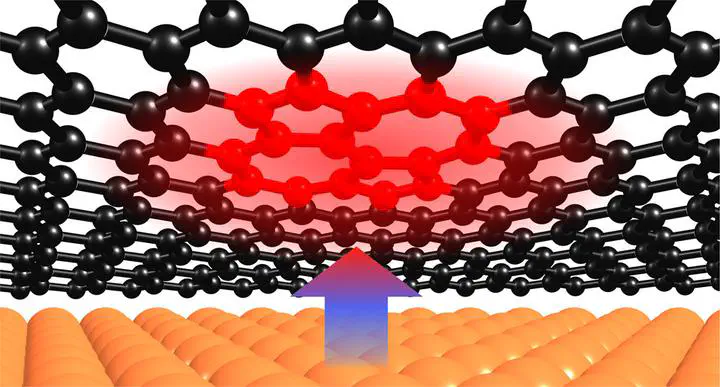Topological Stone–Wales Defects Enhance Bonding and Electronic Coupling at the Graphene/Metal Interface

Abstract
Defects play a critical role for the functionality and performance of materials, but the understanding of the related effects is often lacking, because the typically low concentrations of defects make them difficult to study. A prominent case is the topological defects in two-dimensional materials such as graphene. The performance of graphene-based (opto-)electronic devices depends critically on the properties of the graphene/metal interfaces at the contacting electrodes. The question of how these interface properties depend on the ubiquitous topological defects in graphene is of high practical relevance, but could not be answered so far. Here, we focus on the prototypical Stone–Wales (S–W) topological defect and combine theoretical analysis with experimental investigations of molecular model systems. We show that the embedded defects undergo enhanced bonding and electron transfer with a copper surface, compared to regular graphene. These findings are experimentally corroborated using molecular models, where azupyrene mimics the S–W defect, while its isomer pyrene represents the ideal graphene structure. Experimental interaction energies, electronic-structure analysis, and adsorption distance differences confirm the defect-controlled bonding quantitatively. Our study reveals the important role of defects for the electronic coupling at graphene/metal interfaces and suggests that topological defect engineering can be used for performance control.